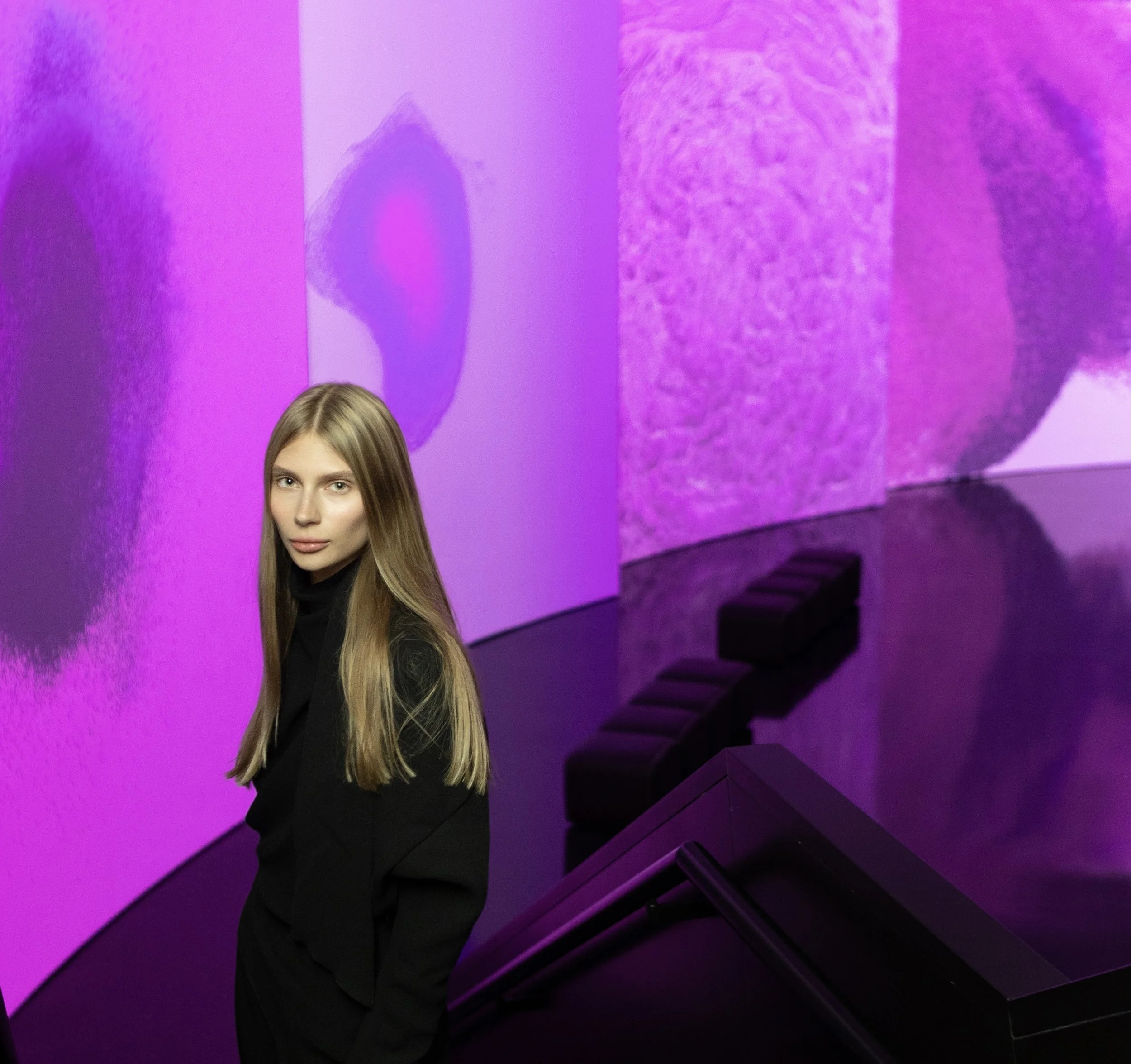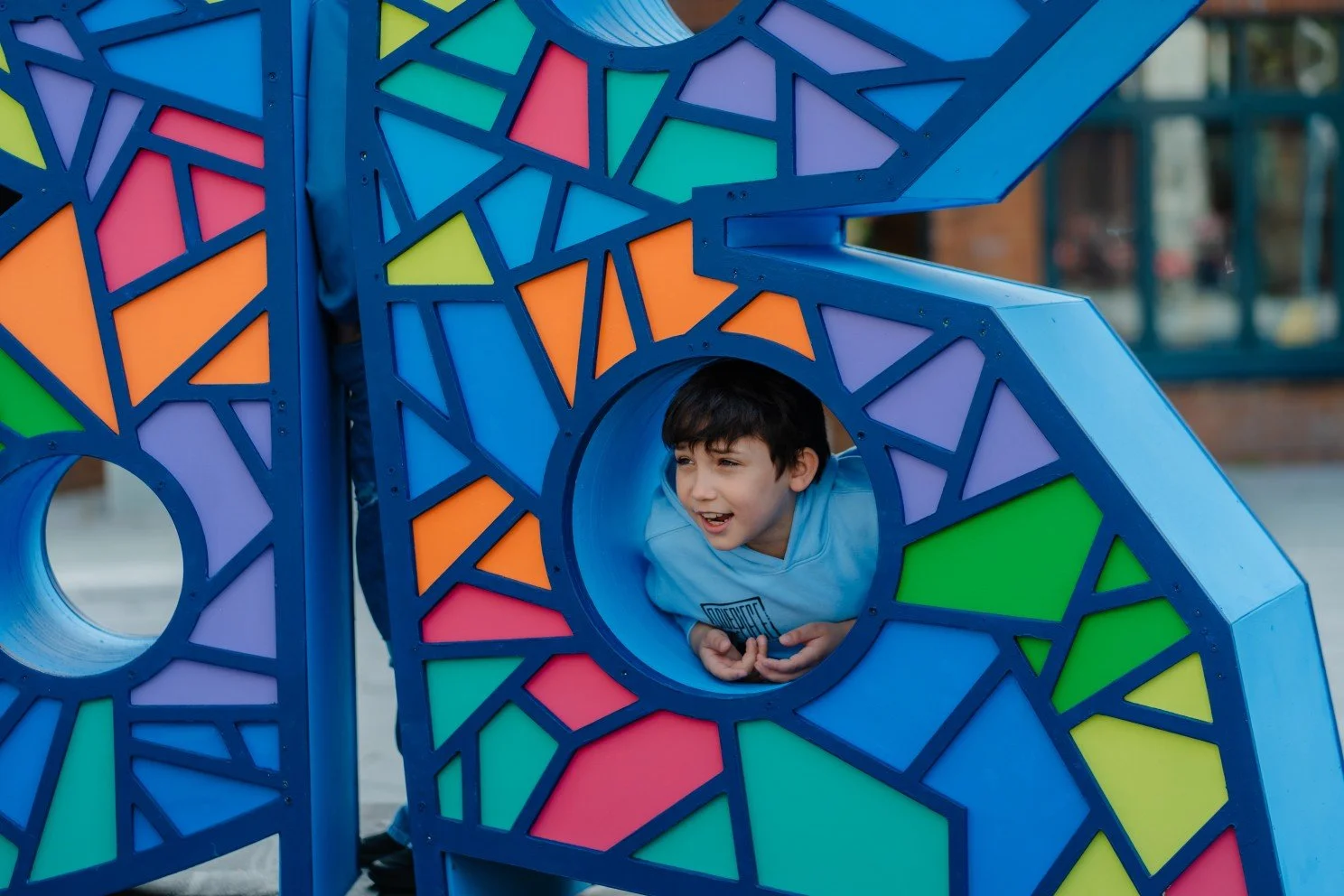10 Questions with Jiayun Chen
Jiayun Chen is an interdisciplinary artist who manifests ideas through forms of installation, ceramics, painting, and drawing. In searching for poetics and humor within failed translations, Chen investigates the aesthetics of failure in the experience of cross-cultural encounters.
Jiayun Chen - Portrait
Having divided time nearly equally between China and America, Chen's artistic journey is heavily influenced by straddling the cultural divide between the two. Language, as a vessel for communication, fascinates her deeply. There is particular intrigue in the nuances of mistranslations that arise in attempts to bridge these two worlds. Instead of mere errors, Chen discerns poetry and humor in mistranslation. Rather than viewing translation as a transparent act, she appreciates and embraces the barriers to translation, which open doors to new linguistic and semiotic possibilities. Chen aims to transcend language's limitations, striving for a more fluid yet collective understanding.
Chen has previously investigated the phenomenon of Chinese character tattoos on Western bodies and misinterpreted English phrases on apparel in Asia. In the previous exhibition, "Scattered All Over the Earth," mistranslation serves as a tool to scrutinize power dynamics between languages. It also serves to challenge established linguistic norms, envisioning a new mode of communication free from the confines of grammar and syntax. In her recent exhibition, "Tat skin slip tongue," she furthers the concept of the poetics of failure, extending the discussion to artificial intelligence-generated images that fail to produce legible text, only capturing the aesthetics of Chinese logographs and Latin and Cyrillic alphabets. This exploration underscores the limitations of AI in understanding and conveying human intention, emphasizing the gap between surface aesthetics and meaningful communication.
Slippery series, Vinyl lettering and inkjet print on luster paper, variable dimensions, 2024 © Jiayun Chen
INTERVIEW
Please share with us a bit about your background and how it has influenced your artistic journey.
I was born and raised in Wenzhou, China - an industrial city known for producing goods such as lighters and shoes. As a child, I was curious about many things and had a particular interest in painting. However, my mom sent me to Chinese calligraphy class when I was six years old because she believed that those who write beautifully are natural painters.
I disliked calligraphy initially due to its monochrome and repetitive practice. However, looking back, I realize that practicing Chinese calligraphy helped shape the way I understand and create art. I value rhythm and structure, sometimes more than the content itself. I also value the forms that art takes shape in and often take a reductionist approach.
Slippery/This is Tattoo, Vinyl lettering and inkjet print on luster paper, 76 x 16 inches, 2024 © Jiayun Chen
As you mentioned in your statement, you spent an equal amount of time in China and the US. How are these two different environments reflected in your work?
Yes, I spent almost equal time between China and the US. Coming to the US for high school and staying ever since was an interesting experience. My current art practice deals with displacement through the exploration of language and mistranslation. Mistranslation as a result of language barriers, cultural barriers, and barriers one constantly crosses but is not normally recognized. Being in an environment and community that merges different cultures, it's natural to make work about my reality that stands in the middle of cultural exchange.
How did your time at the California Institute of the Arts and USC Roski School of Art and Design shape your artistic practice and help you evolve into the artist you are today?
While CalArts provided an encouraging space for conceptual thinking, my experience at USC Roski allowed me to turn conceptual thinking into artwork and understand where I am in the contemporary art framework. As an undergraduate, I was very interested in post-minimalism, Fluxus, and outsider art. It was an exciting period for me. At CalArts, everyone was treated as an artist, and anything had the potential to be art, so I always approached things with a sense of curiosity. When I moved on to graduate school at USC, it took me some time to adjust to the expected level of professionalism and presentation. Nonetheless, I found the lessons on the sociological aspects of the art world to be valuable.
Slippery/Happiness Strength Longevity, Vinyl lettering and inkjet print on luster paper, 73 x 26 ½ inches, 2024 © Jiayun Chen
Slippery/Life Joy Sorrow Development (mirrored), Vinyl lettering and inkjet print on luster paper, 81 x 16 inches, 2024 © Jiayun Chen
Your work spans various mediums, such as installation, ceramics, painting, and drawing. Could you elaborate on how you decide which medium best serves your artistic vision for a particular project?
I usually choose my materials based on the project requirements and how they align with the concept. Although I am most comfortable with drawings and ceramics, being a multidisciplinary artist motivates me to learn new skills. For instance, in the context of my mistranslation project, I researched poorly translated Chinese tattoos on Western bodies. I was fascinated by the process of how they are generated, the twisted intentions behind them, and the similarities they share with AI poetries, which are generated randomly and by chance. Along with this thread, I decided to make a zine full of AI-generated images of word tattoos that are total gibberish. It was my first time learning AI image rendering programs. The learning process is not always fun. There is often frustration that comes with getting to the vision. What keeps me moving is the big picture of the project. I see that as the biggest motivation for gaining new skills.
Can you walk us through your creative process? How do you go from the first idea to the final outcome?
As mentioned earlier, my art practice so far is very much inspired by my reality as an immigrant living in a multicultural space. I normally start with a small observation of mundane life, something that is so everyday but at the same time so absurd. It normally takes me a long time to process, and I ask myself questions like, why does that interest me? What does my obsession with it say in a cultural context? After that, I start to think about the forms and material. Sometimes, my process is less rigid and more intuitive; it also depends on the subject matter that I'm working on.
In your artist statement, you mention exploring the aesthetics of failure in cross-cultural experiences. How do you navigate the complexities of cultural translation in your artwork?
I started developing the mistranslation project while in graduate school. In the very beginning, I was looking at it through the lens of cultural appropriation and identity politics. But as I dug deeper, soon I realized the nuances these tattoos carry—their personal meaning, poetics, and permanency… it can be overwhelming to navigate the complexities, but it's also exactly the reason why I appreciate them so much.
On that note, our current exhibition, "Minor Gaps Between," explores the theme of failed translations. Could you tell us more about the concept behind this exhibition and how it reflects your artistic philosophy?
Heavy/Slippery/Save Moving #1, Vinyl lettering and inkjet print on paper, 48 x 36 inches, 2024 © Jiayun Chen
Heavy/Slippery/Save Moving #2, Vinyl lettering and inkjet print on paper, 48 x 36 inches, 2024 © Jiayun Chen
Ultimately, what are the main themes behind your work? And what messages do you want to convey to the public?
I value social practice and art activism, but my work doesn't aim to convey a singular message for the greater good. Instead, I draw inspiration from my personal experiences and curiosity to explore a wide range of themes. Many of these themes are still evolving and haven't been fully articulated yet. Currently, I'm particularly fascinated by the performance of texts and signs and how they operate or falter within diverse cultural contexts. My goal is not to impose a specific message on the public but rather to stimulate thought and discussion through the exploration of these themes.
Lastly, what future projects are you currently exploring, and how do you envision your artistic practice evolving in the coming years?
I enjoy working with artists and designers on collaborative projects. These collaborations often provide fresh perspectives and inspire new ideas that I may not have encountered otherwise. Currently, I am working on an exciting project with my friend Cuixi Lin, which will take place at the Hong Museum in Wenzhou this June. This is particularly meaningful to me because it will be my first exhibition in my hometown. What makes this collaboration even more interesting is that Cuixi has a background in performance art, which brings a theatrical and focused eye to our project. Moving forward, I hope to adopt a multidisciplinary approach to my artistic practice, exploring various themes and concepts. Ideally, in a few years, I want to continue to be driven by curiosity instead of the demands of the art world.
Artist’s Talk
Al-Tiba9 Interviews is a promotional platform for artists to articulate their vision and engage them with our diverse readership through a published art dialogue. The artists are interviewed by Mohamed Benhadj, the founder & curator of Al-Tiba9, to highlight their artistic careers and introduce them to the international contemporary art scene across our vast network of museums, galleries, art professionals, art dealers, collectors, and art lovers across the globe.





















